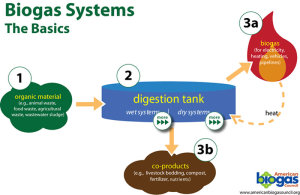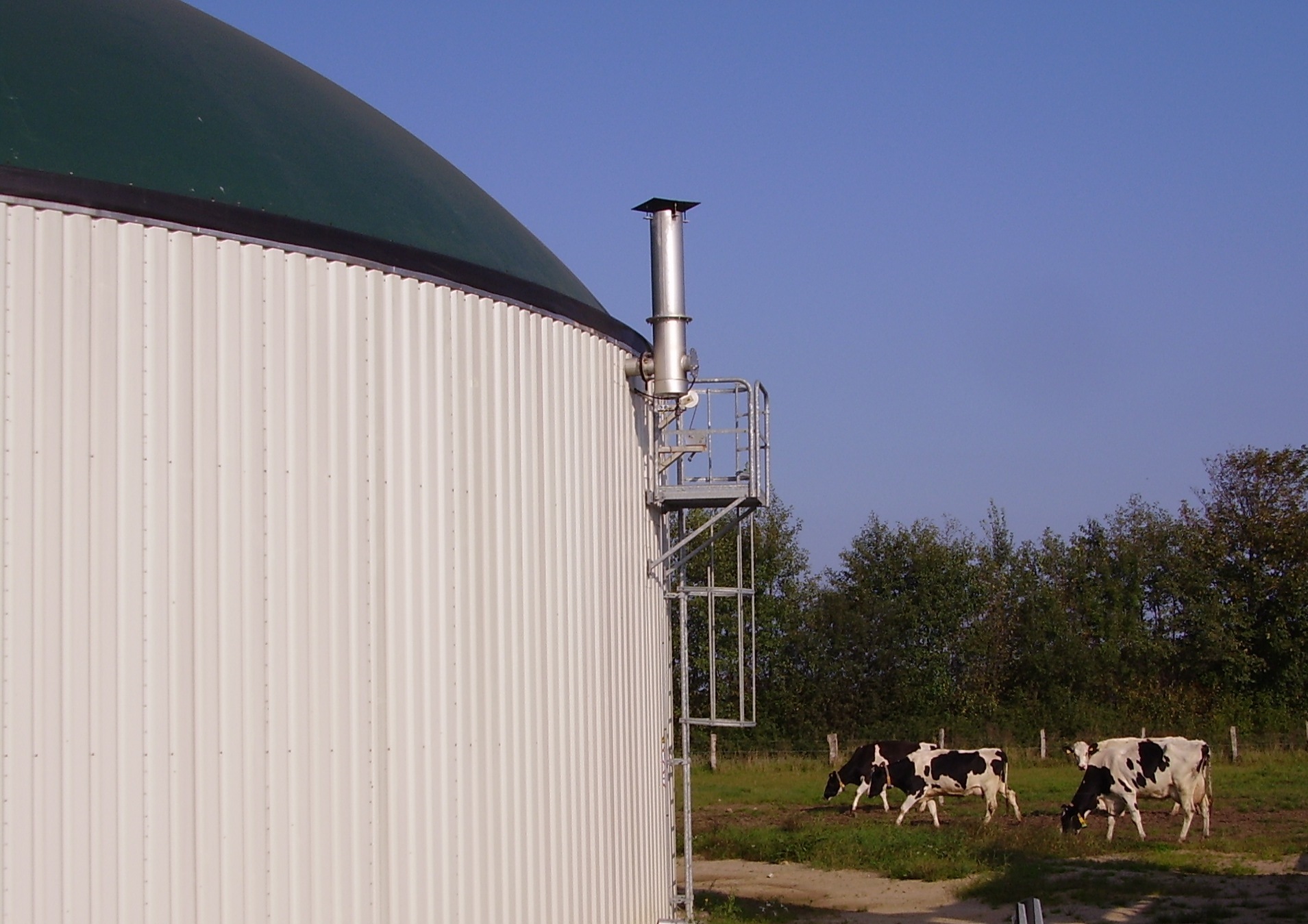This post explains the basic principles of anaerobic digestion, including how this process works, how it generates energy, and how farms can use the energy generated.
Top image: Haase maize anaerobic digester Author: Alex Marshall, Clarke Energy Ltd, October 2007
The basics of anaerobic digestion
Anaerobic digestion is a biological process that happens in the absence of oxygen. Several types of microorganisms convert organic material - such as plant waste or manure - into biogas, which mostly consists of carbon dioxide and methane, and some trace gases.
Most farmers are already familiar with this process in some sense. When manure washes into a lagoon, the organic material settles to the bottom and the water above creates an anaerobic (“without oxygen”) environment. Microorganism then digest the organic manure and release biogas. This mixture bubbles up to the surface and, often, produces a notable odor of methane and hydrogen sulfide gas.
However, by harnessing this process, the biogas produced can be a valuable source of on-farm energy.

Credit: American Biogas Council
Capturing and using biogas
In order to capture the biogas produced from anaerobic digestion, the process needs to happen in a closed system. This might mean covering a lagoon with a large, impermeable tarp to trap the biogas. Other types of systems include complete mix, plug flow, and hybrid systems.
Covered lagoon:

Plug flow:

There are a few different ways that farms can utilize biogas:
Electricity: Biogas can be used to generate electricity using a gas electric generator set or natural gas boiler system. Farms can use this electricity directly or sell it back to a local utility.
Heat: One of the most common uses for biogas is to produce heat for cooking and space heating. It may also be upgraded for use into existing natural gas pipelines.
Fuel: Scrubbed and compressed biogas can be used in vehicles. Steaming methane can also generate hydrogen for use in fuel cells.
Benefits and drawbacks of anaerobic digesters
Anaerobic digestion has the potential to save farms money and energy. Aside from a being a renewable source of energy, anaerobic digesters can provide additional benefits to farms, especially as manure management systems. They reduce methane emissions from manure lagoons, minimize odors and destroy pathogens. By-products of digestion, such as animal bedding and high quality fertilizer, are valuable by-products of the process.
Start-up costs of anaerobic digesters can be high, but cost can be returned by utilizing the biogas onsite, or selling it as fuel. One of the most important factors in cost is to choose a system best suited for the organic material being digested. Some materials, such as manure, benefit by being “co-digested” with other organics (such as food scraps) to increase biogas production.
Another way to offset costs is to apply for federal or state funding. In California, the Dairy Digester Research and Development Program (DDRDP) has funded a total of $46.4 million for dairy digester projects. At the federal level, the USDA’s AgSTAR program is a comprehensive resource for additional information, including financing options.
How Wexus can help
By monitoring energy use real-time, the Wexus app can track energy costs of existing and newly-installed digesters. Our reporting features can help determine operational costs of AD systems and inform decisions on how to best use the energy produced from anaerobic digesters. Wexus’ Enterprise package includes hardware that provides real-time pump status and reporting for certain types of AD systems - and functional and efficient pumps are key to optimal biomethane production.
About the Author
Anna Kulow is an Energy Engineer at Wexus Technologies. She grew up among dairy farms in rural Maryland and studied anaerobic digestion and water quality at the University of Maryland, College Park. Since moving to California in 2015, she has delved into the state’s unique water and energy issues, helping several organizations apply for state funding for energy projects. Prior to joining Wexus in January 2018, she worked to help environmental organizations run smarter campaigns using evidence-based data.
